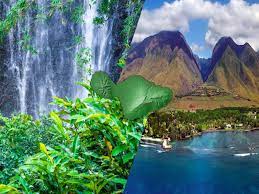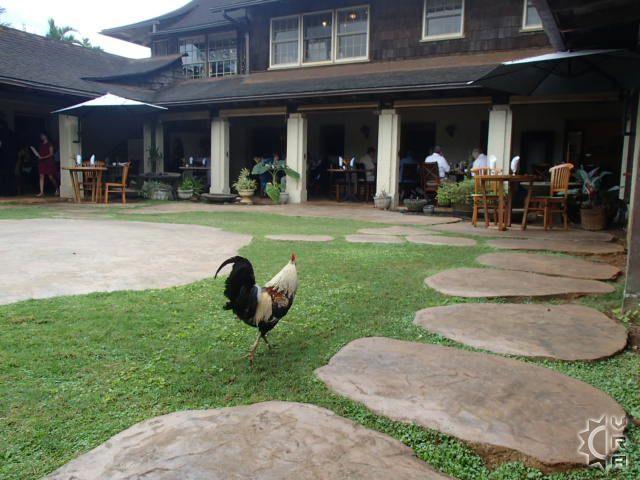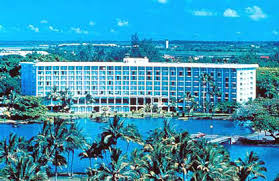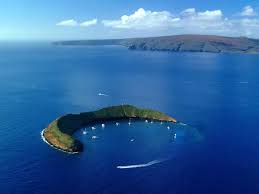
Maui: A Paradise for Every Traveler
Maui, known as the “Valley Isle,” is a captivating Hawaiian island that offers a diverse range of experiences for every type of traveler. From pristine beaches and breathtaking landscapes to rich cultural heritage and exciting outdoor activities, Maui has something to offer everyone who visits.
One of the main attractions of Maui is its stunning coastline. With over 30 miles of picturesque beaches, it’s no wonder that beach lovers flock to this island paradise. From the world-famous Kaanapali Beach with its golden sands and crystal-clear waters to the secluded Hamoa Beach nestled amidst lush greenery, there is a beach for every preference. Whether you’re looking to relax under swaying palm trees or dive into thrilling water sports like snorkeling or surfing, Maui’s beaches have it all.
Beyond its beautiful beaches, Maui boasts an impressive array of natural wonders. The Road to Hana is a legendary drive that takes you through lush rainforests, cascading waterfalls, and dramatic coastal cliffs. This scenic journey is not just about the destination but also about the awe-inspiring journey itself. As you wind your way along this iconic road, be sure to stop at popular attractions like the Twin Falls and Wailua Overlook for unforgettable views.
For adventure seekers, Haleakala National Park offers an unforgettable experience. Standing atop the summit of Haleakala volcano at sunrise feels like being on top of the world as you witness a breathtaking panorama that stretches as far as the eye can see. The park also offers numerous hiking trails that take you through unique landscapes filled with rare flora and fauna.
Maui’s cultural heritage is deeply rooted in its history and traditions. Exploring the historic town of Lahaina will transport you back in time with its charming streets lined with art galleries, boutique shops, and restaurants housed in historic buildings. Don’t miss out on visiting the Baldwin Home Museum or the Lahaina Heritage Museum to learn about the island’s fascinating past.
Food enthusiasts will also find their paradise in Maui. The island is renowned for its farm-to-table culinary scene, with an abundance of fresh local ingredients that inspire innovative and mouthwatering dishes. From traditional Hawaiian cuisine to international flavors, Maui’s restaurants offer a delightful fusion of tastes that cater to every palate.
Whether you’re seeking relaxation, adventure, cultural immersion, or culinary delights, Maui has it all. Its natural beauty, warm hospitality, and diverse offerings make it a must-visit destination for travelers from around the world. So pack your bags and get ready to experience the magic of Maui – a place where dreams become reality amidst breathtaking landscapes and unforgettable experiences.
9 Frequently Asked Questions About Maui Tourist Destination
- What is the best time of year to visit Maui?
- What are the top things to do in Maui?
- Where can I find the best beaches in Maui?
- What attractions should I not miss in Maui?
- Are there any hidden gems in Maui that I should check out?
- How much does it cost to stay on Maui?
- Is there public transportation available on the island of Maui?
- What type of food is available on Maui?
- Are there any special events or festivals happening on Maui during my visit?
What is the best time of year to visit Maui?
The best time to visit Maui largely depends on your preferences and what you plan to do during your trip. Maui enjoys warm and pleasant weather year-round, but there are a few factors to consider when deciding on the ideal time for your visit.
The peak tourist season in Maui generally falls between December and April, coinciding with the winter months. This is when many travelers from colder regions seek refuge in the island’s warm climate. During this time, you can expect higher hotel rates and more crowded attractions, especially around holidays like Christmas and New Year’s.
If you prefer a quieter and more budget-friendly experience, consider visiting Maui during the shoulder seasons of spring (April to May) or fall (September to November). These periods offer pleasant weather, fewer crowds, and better deals on accommodations and activities.
For those interested in water activities such as snorkeling or surfing, the summer months from June to August are ideal. The ocean temperatures are warmer during this time, making it perfect for underwater exploration or catching some waves. However, it’s worth noting that summer is also considered the low season due to increased heat and occasional rainfall.
Maui’s microclimates mean that weather conditions can vary across different parts of the island. The eastern side tends to be wetter, while the western side experiences drier conditions. Keep this in mind when planning outdoor activities or exploring specific regions of Maui.
Overall, Maui offers something special throughout the year. Whether you’re seeking vibrant festivals and events or peaceful moments surrounded by nature, there is no wrong time to visit this beautiful island. Consider your preferences regarding weather conditions, crowd levels, and budget when deciding on the best time for your Maui adventure.
What are the top things to do in Maui?
- Explore the Road to Hana: Embark on a scenic drive along the famous Road to Hana, where you’ll encounter breathtaking waterfalls, lush rainforests, and stunning coastal views. Be sure to make stops at attractions like Twin Falls, Wailua Overlook, and the Seven Sacred Pools.
- Visit Haleakala National Park: Witness a mesmerizing sunrise or sunset from the summit of Haleakala volcano in Haleakala National Park. Take a hike through otherworldly landscapes and marvel at the unique flora and fauna found within this natural wonder.
- Relax on Maui’s Beautiful Beaches: Spend some time soaking up the sun on Maui’s pristine beaches. From popular spots like Kaanapali Beach and Wailea Beach to hidden gems like Secret Cove and Honolua Bay, there’s a beach for every preference.
- Snorkel or Dive in Molokini Crater: Embark on a boat tour to Molokini Crater, a partially submerged volcanic crater known for its crystal-clear waters and vibrant marine life. Snorkel or dive alongside tropical fish, sea turtles, and colorful coral reefs.
- Take a Helicopter Tour: Get a bird’s-eye view of Maui’s stunning landscapes by taking a helicopter tour. Soar above lush valleys, cascading waterfalls, and dramatic coastlines for an unforgettable experience.
- Explore Iao Valley State Park: Discover the natural beauty of Iao Valley State Park with its towering emerald-green peaks and the iconic Iao Needle rock formation. Take a leisurely hike through this serene valley or learn about Hawaiian history at the park’s visitor center.
- Attend a Luau: Immerse yourself in Hawaiian culture by attending an authentic luau. Enjoy traditional food, music, hula dancing performances, and learn about ancient Polynesian traditions.
- Visit Lahaina Town: Explore the historic town of Lahaina, known for its charming atmosphere and rich history. Stroll along Front Street, browse art galleries and boutique shops, and visit landmarks like the Baldwin Home Museum.
- Go Whale Watching (seasonal): If you visit Maui between December and April, don’t miss the opportunity to go whale watching. Witness the majestic humpback whales as they migrate to the warm waters of Hawaii.
- Indulge in Farm-to-Table Cuisine: Experience Maui’s vibrant culinary scene by dining at farm-to-table restaurants. Sample fresh local ingredients and savor innovative dishes that highlight the flavors of the island.
These are just a few of the many incredible experiences that await you on the beautiful island of Maui. Whether you’re seeking adventure, relaxation, or cultural immersion, Maui offers an abundance of activities to make your visit unforgettable.
Where can I find the best beaches in Maui?
Maui is home to numerous stunning beaches, each with its own unique charm. Here are some of the best beaches on the island that you won’t want to miss:
- Kaanapali Beach: Located on Maui’s west coast, Kaanapali Beach is one of the most famous and popular beaches on the island. With its golden sands, crystal-clear waters, and vibrant atmosphere, it offers a range of activities including swimming, snorkeling, paddleboarding, and beachfront dining.
- Wailea Beach: Situated in the upscale resort area of Wailea, this beach boasts soft white sands and calm turquoise waters. It’s perfect for sunbathing, swimming, and snorkeling. The nearby luxury resorts provide convenient access to amenities like beachside loungers and umbrellas.
- Napili Bay: Nestled in a picturesque cove on Maui’s northwest coast, Napili Bay is a hidden gem known for its tranquil beauty. This crescent-shaped beach offers excellent swimming conditions and is ideal for families looking for a peaceful spot away from crowds.
- Hamoa Beach: Located on Maui’s eastern side near Hana, Hamoa Beach is renowned for its remote beauty. Surrounded by lush greenery and framed by dramatic cliffs, this crescent-shaped beach offers breathtaking views and excellent boogie boarding opportunities.
- Makena Beach (Big Beach): Situated in Makena State Park, this expansive golden-sand beach stretches over half a mile long and is great for sunbathing and bodyboarding. Be cautious of strong currents at times but enjoy the stunning views of neighboring islands like Molokini and Kahoolawe.
- Kapalua Bay: Considered one of Maui’s most picturesque bays, Kapalua Bay offers calm waters perfect for snorkeling among vibrant coral reefs teeming with marine life. The surrounding area provides picnic tables and shaded spots for relaxation.
- Honolua Bay: Located on Maui’s northwest coast, Honolua Bay is a paradise for snorkelers and divers. Its crystal-clear waters are home to an abundance of colorful fish and vibrant coral reefs. The bay is part of a marine reserve, ensuring its preservation.
Remember to check local conditions and heed any posted warnings before entering the water. Additionally, respect the environment by practicing responsible beach etiquette, such as packing out your trash and avoiding stepping on coral reefs. Enjoy your time exploring these magnificent beaches in Maui!
What attractions should I not miss in Maui?
When visiting Maui, there are several attractions that you should not miss to make the most of your trip. Here are some must-see attractions on the island:
- Haleakala National Park: Witness the stunning sunrise or sunset from the summit of Haleakala volcano. The panoramic views and unique landscapes make this a truly unforgettable experience.
- Road to Hana: Embark on a scenic drive along the famous Road to Hana, where you’ll encounter breathtaking waterfalls, lush rainforests, and picturesque coastal views. Be sure to stop at notable spots like Twin Falls and Wailua Overlook.
- Kaanapali Beach: Relax on one of Maui’s most beautiful beaches, Kaanapali Beach. With its golden sands, clear turquoise waters, and vibrant atmosphere, it’s perfect for sunbathing, swimming, snorkeling, or enjoying water sports.
- Lahaina Historic District: Explore the charming town of Lahaina with its historic buildings that date back to the whaling era. Discover art galleries, boutique shops, and learn about Maui’s rich cultural heritage by visiting museums like the Baldwin Home Museum.
- Iao Valley State Park: Immerse yourself in nature at Iao Valley State Park, home to the iconic Iao Needle rock formation. Take a hike through lush rainforests and admire cascading waterfalls in this serene setting.
- Molokini Crater: Embark on a boat tour to Molokini Crater, a partially submerged volcanic crater known for its crystal-clear waters and vibrant marine life. Snorkeling or diving here is an incredible experience.
- Maui Ocean Center: Discover Hawaii’s marine life at the Maui Ocean Center in Maalaea. This state-of-the-art aquarium offers interactive exhibits showcasing various species of fish, turtles, sharks, and more.
- Ali’i Kula Lavender Farm: Take a trip to the Ali’i Kula Lavender Farm and immerse yourself in the fragrant beauty of lavender fields. Enjoy a leisurely stroll, learn about the cultivation process, and indulge in lavender-infused treats.
- Maui Tropical Plantation: Explore the lush grounds of the Maui Tropical Plantation, where you can take a tram tour through tropical fruit orchards, learn about local agriculture, and sample fresh produce.
- Snorkeling at Molokini or Honolua Bay: Dive into Maui’s underwater world by snorkeling at Molokini Crater or Honolua Bay. These sites offer incredible visibility and a chance to encounter colorful coral reefs and diverse marine life.
Remember, Maui has so much to offer that it’s impossible to experience everything in one visit. However, these attractions provide a great starting point for an unforgettable journey on this enchanting island.
Are there any hidden gems in Maui that I should check out?
Absolutely! While Maui offers well-known attractions, there are also some hidden gems that are worth exploring. Here are a few recommendations:
- Iao Valley State Park: Tucked away in the lush West Maui Mountains, Iao Valley is a serene and picturesque destination. Take a short hike to the iconic Iao Needle, a towering green pinnacle surrounded by misty rainforest. The valley is rich in cultural significance and offers a glimpse into Maui’s history.
- Nakalele Blowhole: Located on the northern coast of Maui, the Nakalele Blowhole is a natural wonder that shouldn’t be missed. This powerful blowhole shoots water high into the air as waves crash against the rocky shoreline. Be cautious and keep a safe distance from the blowhole, as it can be unpredictable.
- Bamboo Forest: Head to the eastern side of Maui near Hana to discover an enchanting Bamboo Forest along the Pipiwai Trail within Haleakala National Park. Walk through towering bamboo stalks that create an otherworldly atmosphere, leading you to awe-inspiring sights like Waimoku Falls.
- Makawao Town: Known as Maui’s “cowboy town,” Makawao offers a unique blend of Hawaiian heritage and cowboy culture. Explore its charming streets lined with art galleries, boutiques, and local eateries. Don’t forget to try some delicious pastries from one of the town’s famous bakeries.
- Secret Beaches: While Maui has stunning beaches, there are some lesser-known spots that offer seclusion and tranquility. Look for hidden gems like Honolua Bay (great for snorkeling), Kaihalulu Red Sand Beach (accessible via a short hike), or Wai’anapanapa State Park (known for its black sand beach and lava tubes).
- Upcountry Maui: Take a drive upcountry to explore picturesque landscapes dotted with rolling hills, farms, and charming towns. Visit the Ali’i Kula Lavender Farm for stunning views and aromatic lavender fields, or stop by the Surfing Goat Dairy to learn about goat cheese production and even try some samples.
These hidden gems provide a chance to escape the crowds and discover Maui’s lesser-known treasures. So venture off the beaten path and uncover the secrets that make this island truly special.
How much does it cost to stay on Maui?
The cost of staying on Maui can vary depending on several factors such as the time of year, location, type of accommodation, and amenities. Here is a general overview of the cost range for accommodations on the island:
Hotels and Resorts: On average, hotel rates in Maui can range from $150 to $500 per night for mid-range options. Luxury resorts and high-end hotels can go upwards of $600 or more per night.
Vacation Rentals: Vacation rentals, including condos, villas, and beach houses, provide a wide range of options for travelers. Prices can vary significantly depending on size, location, and amenities. Generally, vacation rentals can range from $150 to $500 per night or more.
Budget Accommodations: For budget-conscious travelers, there are also affordable options available such as hostels and budget hotels. Prices for these accommodations typically start around $70 per night.
It’s worth noting that prices tend to be higher during peak travel seasons such as holidays and summer months. Additionally, certain areas like Lahaina or Wailea may have higher rates due to their popularity and proximity to attractions.
Aside from accommodation costs, it’s important to consider other expenses such as transportation (rental cars or taxis), meals at restaurants (which can vary depending on dining preferences), activities and excursions (such as snorkeling trips or helicopter tours), and general shopping expenses.
Ultimately, the cost of staying on Maui will depend on your personal preferences and budget. It’s advisable to plan ahead and research different options to find the best deals that suit your needs while ensuring an enjoyable stay on this beautiful island.
Is there public transportation available on the island of Maui?
Yes, there is public transportation available on the island of Maui. The primary mode of public transportation is the Maui Bus, operated by the County of Maui Department of Transportation. The bus system covers major areas of the island, making it convenient for both residents and visitors to get around.
The Maui Bus operates multiple routes that connect various towns, resorts, shopping centers, and popular attractions on the island. The routes cover areas such as Kahului, Wailuku, Lahaina, Kihei, and Upcountry Maui. The buses are clean, comfortable, and equipped with air conditioning.
Fares for riding the Maui Bus are affordable and vary depending on the distance traveled. Exact change is required when boarding the bus as drivers do not provide change. Discounted fares are available for seniors (65 years and older), people with disabilities, and students with valid identification.
It’s important to note that while the Maui Bus provides a reliable means of transportation for many destinations on the island, it may not reach every remote area or tourist attraction. In such cases or for those seeking more flexibility in their itinerary, renting a car or booking guided tours may be preferable.
For visitors staying in popular resort areas like Kaanapali or Wailea, many hotels offer shuttle services to nearby attractions or shopping centers. It’s worth checking with your accommodation provider if they provide any transportation options.
Overall, while public transportation through the Maui Bus can be a convenient and cost-effective way to explore certain parts of the island, it’s advisable to plan your itinerary in advance and consider alternative transportation options depending on your specific needs and desired destinations.
What type of food is available on Maui?
Maui offers a vibrant culinary scene that caters to a wide range of tastes and preferences. With its abundance of fresh local ingredients, the island’s food options are diverse and delicious. Here are some of the types of food you can find on Maui:
- Hawaiian Cuisine: Immerse yourself in the flavors of the islands with traditional Hawaiian dishes. From poi (a staple made from taro root) to kalua pig (roasted in an underground oven), these dishes showcase the indigenous flavors and techniques of Hawaii.
- Seafood: Being surrounded by the Pacific Ocean, Maui is a paradise for seafood lovers. Indulge in fresh catches like mahi-mahi, ono, ahi (tuna), and opakapaka (pink snapper). Whether grilled, seared, or served raw in poke bowls, seafood is a must-try on the island.
- Farm-to-Table: Maui’s farm-to-table movement is thriving, with many restaurants sourcing ingredients directly from local farmers. Enjoy dishes made with organic fruits and vegetables, grass-fed beef, and locally caught fish – all showcasing the island’s commitment to sustainability and supporting local agriculture.
- Asian Cuisine: Maui’s multicultural makeup is reflected in its diverse Asian cuisine offerings. From Japanese sushi and ramen to Chinese dim sum and Vietnamese pho, you’ll find an array of Asian flavors that will satisfy your cravings.
- Fusion Cuisine: Maui’s culinary scene also embraces fusion cuisine that combines different culinary traditions for unique flavor profiles. Experience innovative dishes blending Hawaiian ingredients with international influences such as Pacific Rim fusion or Hawaiian-Asian fusion.
- Food Trucks: Don’t miss out on exploring Maui’s vibrant food truck scene! These mobile eateries offer an eclectic mix of cuisines ranging from Mexican tacos to gourmet burgers to fresh smoothies – perfect for grabbing a quick bite while exploring the island.
- Tropical Fruits: Indulge in the abundance of tropical fruits on Maui. From juicy pineapples and sweet mangoes to exotic treats like lilikoi (passion fruit) and guava, these flavors will transport your taste buds to a tropical paradise.
Whether you’re looking for traditional Hawaiian fare, fresh seafood, or international flavors, Maui’s culinary offerings are sure to delight every palate. So, embark on a culinary journey and savor the diverse tastes that this island paradise has to offer.
Are there any special events or festivals happening on Maui during my visit?
Absolutely! Maui is known for its vibrant and lively festivals that showcase the island’s rich culture and traditions. Depending on the time of your visit, you may have the opportunity to immerse yourself in one of these exciting events. Here are a few notable festivals that take place on Maui throughout the year:
- Maui Film Festival: Held annually in June, this festival celebrates the art of filmmaking. It features a variety of film screenings, celebrity tributes, and special events at various venues across the island.
- Maui County Fair: Taking place in September, this iconic fair brings together locals and visitors for a weekend filled with carnival rides, live entertainment, delicious food vendors, agricultural exhibits, and much more.
- Celebration of the Arts: Hosted by The Ritz-Carlton in Kapalua every April, this cultural event showcases Hawaiian art, music, dance performances, storytelling, and traditional crafts. It offers a unique opportunity to learn about Hawaiian culture from local artisans and experts.
- Makawao Rodeo: If you’re visiting around Independence Day (July 4th), you can witness the excitement of the Makawao Rodeo. This annual event features thrilling rodeo competitions such as bull riding, barrel racing, and team roping.
- Maui Whale Festival: From December to May (peak whale-watching season), the Pacific Whale Foundation organizes a series of events celebrating the majestic humpback whales that migrate to Maui’s waters during this time. Enjoy educational programs, ocean cruises to observe whales up close, and various family-friendly activities.
These are just a few examples of the many festivals and events that occur on Maui throughout the year. It’s always worth checking local event calendars or contacting tourism offices for specific dates and details during your visit. Attending one of these festivals will not only provide entertainment but also give you deeper insights into Maui’s vibrant culture and community spirit.




